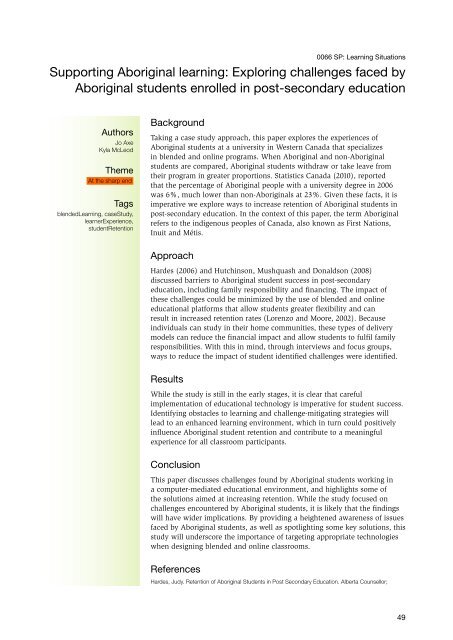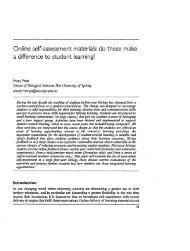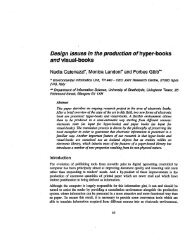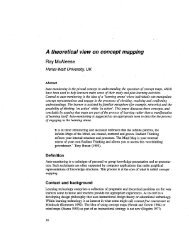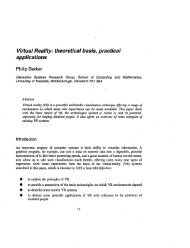Download (2177Kb) - ALT Open Access Repository - Association for ...
Download (2177Kb) - ALT Open Access Repository - Association for ...
Download (2177Kb) - ALT Open Access Repository - Association for ...
Create successful ePaper yourself
Turn your PDF publications into a flip-book with our unique Google optimized e-Paper software.
0066 SP: Learning Situations<br />
Supporting Aboriginal learning: Exploring challenges faced by<br />
Aboriginal students enrolled in post-secondary education<br />
Authors<br />
Jo Axe<br />
Kyla McLeod<br />
Theme<br />
At the sharp end<br />
Tags<br />
blendedLearning, caseStudy,<br />
learnerExperience,<br />
studentRetention<br />
Background<br />
Taking a case study approach, this paper explores the experiences of<br />
Aboriginal students at a university in Western Canada that specializes<br />
in blended and online programs. When Aboriginal and non-Aboriginal<br />
students are compared, Aboriginal students withdraw or take leave from<br />
their program in greater proportions. Statistics Canada (2010), reported<br />
that the percentage of Aboriginal people with a university degree in 2006<br />
was 6%, much lower than non-Aboriginals at 23%. Given these facts, it is<br />
imperative we explore ways to increase retention of Aboriginal students in<br />
post-secondary education. In the context of this paper, the term Aboriginal<br />
refers to the indigenous peoples of Canada, also known as First Nations,<br />
Inuit and Métis.<br />
Approach<br />
Hardes (2006) and Hutchinson, Mushquash and Donaldson (2008)<br />
discussed barriers to Aboriginal student success in post-secondary<br />
education, including family responsibility and financing. The impact of<br />
these challenges could be minimized by the use of blended and online<br />
educational plat<strong>for</strong>ms that allow students greater flexibility and can<br />
result in increased retention rates (Lorenzo and Moore, 2002). Because<br />
individuals can study in their home communities, these types of delivery<br />
models can reduce the financial impact and allow students to fulfil family<br />
responsibilities. With this in mind, through interviews and focus groups,<br />
ways to reduce the impact of student identified challenges were identified.<br />
Results<br />
While the study is still in the early stages, it is clear that careful<br />
implementation of educational technology is imperative <strong>for</strong> student success.<br />
Identifying obstacles to learning and challenge-mitigating strategies will<br />
lead to an enhanced learning environment, which in turn could positively<br />
influence Aboriginal student retention and contribute to a meaningful<br />
experience <strong>for</strong> all classroom participants.<br />
Conclusion<br />
This paper discusses challenges found by Aboriginal students working in<br />
a computer-mediated educational environment, and highlights some of<br />
the solutions aimed at increasing retention. While the study focused on<br />
challenges encountered by Aboriginal students, it is likely that the findings<br />
will have wider implications. By providing a heightened awareness of issues<br />
faced by Aboriginal students, as well as spotlighting some key solutions, this<br />
study will underscore the importance of targeting appropriate technologies<br />
when designing blended and online classrooms.<br />
References<br />
Hardes, Judy. Retention of Aboriginal Students in Post Secondary Education. Alberta Counsellor;<br />
49


